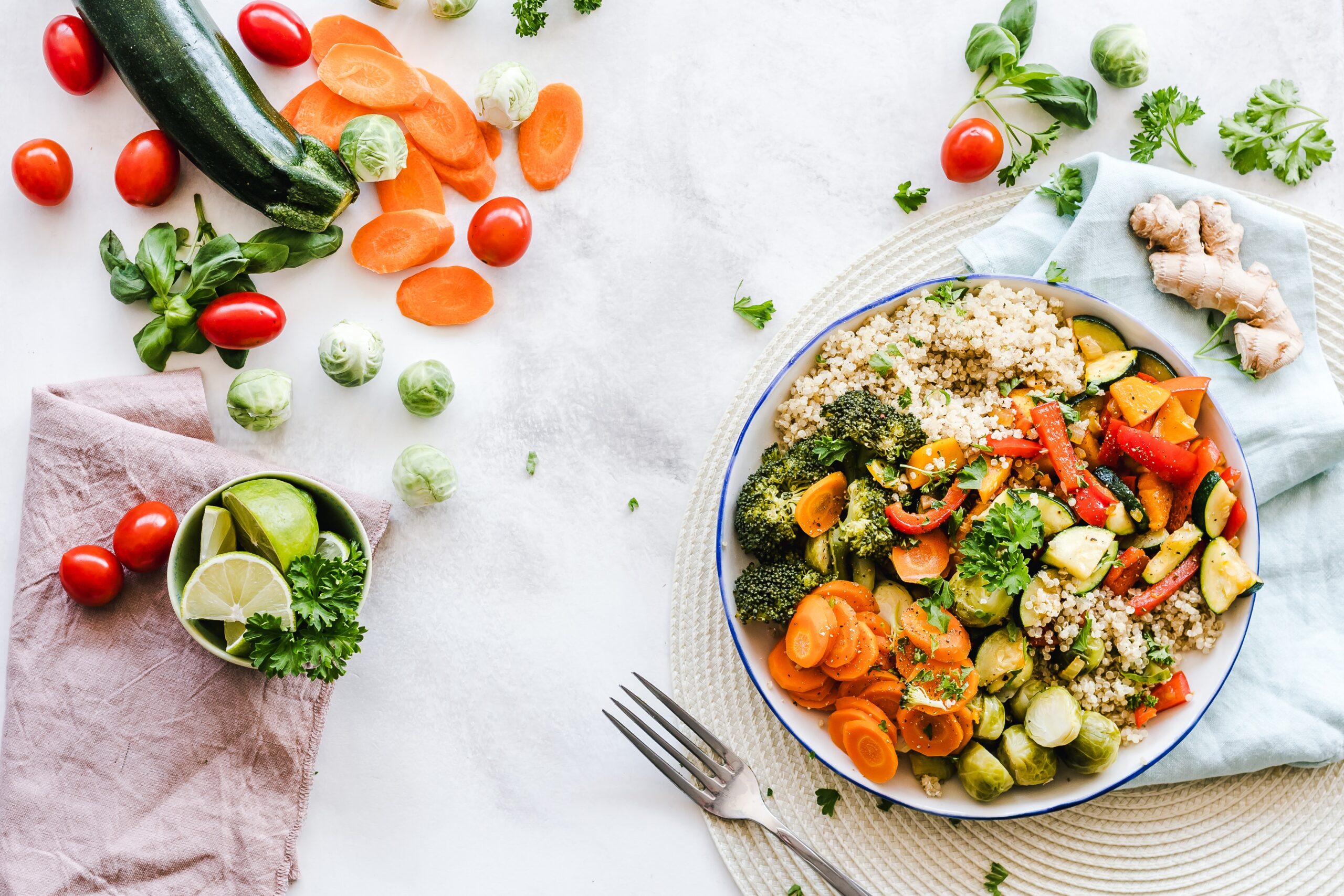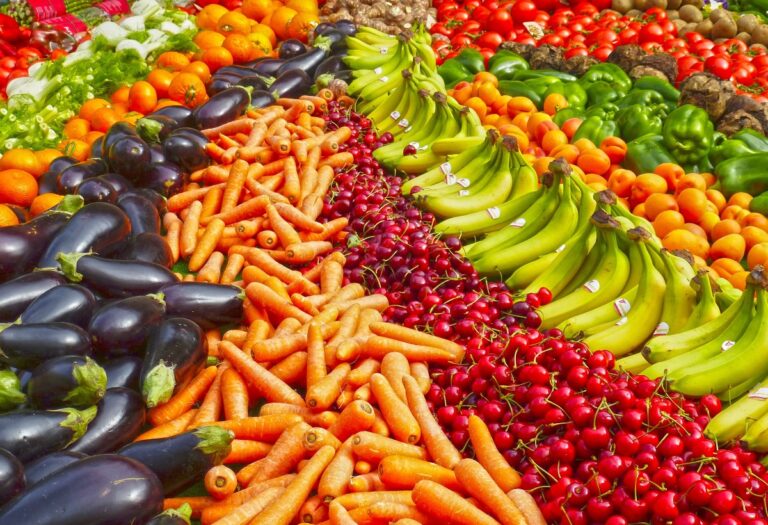Beyond Hyped Diets
Cultivate Healthier Eating Habits for a Lasting Lifestyle
With an abundance of dieting articles, weight-loss tips, and flashing ads for the latest fitness fads, it’s evident that healthy living has become a major focus for many people. Yet, beyond the hype of quick-fix diets, trending superfoods, and weight-loss advertisements, what are the genuine ways to embrace healthier eating in your life? Let’s explore the science-backed strategies that go beyond the noise and help build sustainable, nutritious habits.
 Downshiftology Healthy Meal Prep |
The Reality of Weight and Genetics
Understanding Body Weight and Genetics
While many people associate health with weight, research shows that physical weight is heavily influenced by factors beyond our control, particularly genetics and the makeup of our gut microbiome. The microbiome—the community of bacteria living in our intestines—plays a significant role in determining how our bodies process food, store fat, and regulate energy. Some individuals are naturally predisposed to carry more weight due to these biological factors, which means weight alone is not always an accurate reflection of one’s health.
Why Weight Isn’t the Whole Picture
For most people, weight is not the primary factor contributing to chronic disease or overall well-being. Instead, the real indicators of health lie in the quality of daily nutrition and lifestyle choices. Focusing solely on weight can be misleading and may overshadow the importance of healthy habits. A balanced diet, regular exercise, and a positive relationship with food are far more significant in determining long-term health outcomes than the number on the scale.
Prioritizing Nutrient-Dense Foods
What Does “Healthy Eating” Really Mean?
Healthy eating isn’t about restrictive diets or avoiding certain food groups entirely. It’s about making intentional, balanced choices that provide your body with the nutrients it needs to function optimally. This means incorporating a variety of nutrient-dense foods—foods that are high in vitamins, minerals, fiber, and antioxidants but low in added sugars, unhealthy fats, and empty calories.
Key Components of a Nutrient-Rich Diet

Fruits and Vegetables
Packed with essential vitamins and antioxidants, fruits and vegetables are the cornerstone of a healthy diet. Aim for a colorful variety to get a broad spectrum of nutrients.
Whole Grains
Unlike refined grains, whole grains provide fiber, B vitamins, and minerals that support digestion and heart health.
Lean Proteins
Including sources like chicken, fish, beans, and tofu in your diet helps maintain muscle mass, supports immune function, and balances blood sugar levels.
Healthy Fats
Fats found in nuts, seeds, avocados, and olive oil are important for brain health, hormone production, and cell function.
The Role of Gut Health in Nutrition
The Microbiome Connection
The gut microbiome, or the ecosystem of bacteria in your intestines, plays a crucial role in digestion, nutrient absorption, and even mental health. A balanced microbiome can aid in weight management, enhance immune function, and help reduce inflammation. Eating a diverse diet rich in fiber from fruits, vegetables, and whole grains supports a healthy gut by feeding beneficial bacteria.
Foods for a Healthy Microbiome
Fermented Foods
Foods like yogurt, kefir, sauerkraut, and kimchi contain probiotics, which introduce beneficial bacteria to the gut.
Prebiotic-Rich Foods
Prebiotics are types of fiber that feed good bacteria. They’re found in foods like garlic, onions, bananas, and oats.
Why Nutrition is More Important Than Weight Alone
Shifting the Focus from Weight Loss to Health Gains
It’s important to recognize that weight alone is not a reliable indicator of health. Many people with a “normal” weight can have poor dietary habits, just as individuals who may be classified as “overweight” by traditional standards can have excellent nutrition and fitness routines. Focusing solely on weight can lead to harmful dieting practices, nutrient deficiencies, and an unhealthy relationship with food. Instead, focusing on the quality of food and maintaining a balanced lifestyle is a more effective approach to long-term health.
Benefits of Quality Nutrition on Chronic Disease Prevention
A diet rich in whole, unprocessed foods is shown to reduce the risk of chronic diseases, including heart disease, diabetes, and certain cancers. Nutrient-dense foods can lower cholesterol, regulate blood sugar, reduce inflammation, and improve energy levels. By prioritizing balanced nutrition over weight loss, you can support your body’s overall health and reduce the likelihood of developing these conditions.
Building Sustainable Habits for a Healthier Life
Tips for Cultivating Healthy Eating Habits
Avoid Fad Diets
Quick-fix diets may offer short-term results but are often unsustainable and can lead to nutrient deficiencies.
Practice Mindful Eating
Pay attention to hunger cues, savor your meals, and avoid distractions while eating to foster a healthier relationship with food.
Plan Balanced Meals
Incorporate a mix of proteins, whole grains, and vegetables into each meal to support your body’s needs throughout the day.
Stay Hydrated
Water is essential for digestion, nutrient absorption, and overall well-being. Aim to drink enough water each day to stay hydrated and energized.
Focus on Progress, Not Perfection
Healthy eating is a journey, not a destination. Celebrate small improvements and strive for balance rather than perfection.
Embrace Health Beyond the Scale
True health goes far beyond numbers on a scale. Instead of focusing solely on weight, prioritize the quality of your diet, physical activity, and the joy of nourishing your body with balanced, nutrient-rich foods. By cultivating healthy eating habits and making mindful choices, you can build a lifestyle that promotes long-term wellness and protects against chronic disease—no fad diets required. Embrace the journey toward better health and make it a sustainable, enjoyable part of your life.
Understanding the Impact of Nutrition on Health
When it comes to nutrition, it’s important to realize that not all foods are created equal. The choices we make about what we put into our bodies can have a profound effect on our overall health, longevity, and risk of disease. Research shows that certain diets and food choices are consistently linked to better health outcomes, while others contribute to serious health risks. Let’s explore the science behind why some foods are better than others and how different dietary choices impact our health.
The Global Impact of Diet on Health
Poor Diet is the Leading Cause of Premature Death
A large study published in The Lancet analyzed dietary habits in 195 countries and concluded that poor diet and nutrition are the leading risk factors for premature death globally. Diets high in processed foods, unhealthy fats, and sugars are directly linked to chronic diseases such as heart disease, diabetes, and certain cancers. On the flip side, diets rich in fruits, vegetables, nuts, and healthy oils have been shown to support longevity and overall wellness.
Mediterranean Diets and Longevity
Countries like Israel, France, Spain, and Japan have some of the lowest rates of diet-related disease in the world. This is partly due to their adherence to Mediterranean-like diets, which emphasize whole foods, fresh produce, seafood, and healthy fats like olive oil. These diets, known for their high nutritional value, provide essential vitamins, minerals, and antioxidants that promote heart health, reduce inflammation, and lower the risk of chronic illness.
The Role of the Microbiome in Nutrition and Health
What is the Microbiome?
The microbiome is a community of trillions of microorganisms, including bacteria, fungi, and viruses, that live in our body, especially in the gut. These microbes play a key role in immune function, metabolism, digestion, and even mental health. A healthy microbiome is essential for a balanced body and can influence everything from nutrient absorption to inflammation levels.
Beneficial Bacteria: Bifidobacteria and Lactobacillus
Certain foods can promote the growth of beneficial bacteria strains in the gut. For example, inulin—a fiber found in foods like chicory root and Jerusalem artichokes—encourages the growth of Bifidobacteria and Lactobacillus, both of which support digestion and immune function. Additionally, fermented foods such as kimchi, sauerkraut, and yogurt introduce probiotics, or beneficial bacteria, that enhance the microbiome’s health. On the other hand, diets high in fatty red meats like pork and beef can hinder the growth of these helpful bacteria, making lean proteins like fish a better choice for promoting gut health.
The Rise of Ultra-Processed Foods
What Are Ultra-Processed Foods?
Over the past few decades, ultra-processed foods—those that have been heavily modified with added sugars, salts, fats, preservatives, and artificial ingredients—have become a significant part of the global diet. These foods are designed to be convenient, affordable, and long-lasting, but they often lack the essential nutrients found in whole foods.
How Ultra-Processed Foods Affect Appetite and Health
A controlled trial by the National Institutes of Health found that participants eating ultra-processed foods tended to consume more calories than those on a whole-food diet, even when the meals were matched for calories, sugar, fat, and other nutrients. One reason could be that processed foods lead to lower production of the appetite-suppressing hormone PYY and increase production of the hunger hormone ghrelin, making people feel hungrier and more likely to overeat. Additionally, the softer texture of ultra-processed foods makes them easier to consume quickly, which can contribute to overeating.
The Challenges of Accessing Healthy Foods
Economic and Policy Barriers
In the United States, government subsidies for the dairy and sugar industries make certain processed foods cheaper and more accessible than fresh produce. For low-income families relying on food assistance programs, purchasing fresh, healthy foods can be challenging due to higher costs and limited availability. As a result, nutritious options are often out of reach for many people, leading to a cycle of poor dietary habits and health disparities.
Addressing the Systemic Issues in Food Production
Reducing Reliance on Processed and Commodity Crops
Addressing malnutrition and diet-related diseases will require systemic changes in the way food is produced and consumed. Encouraging food producers to move away from a heavy focus on starch and sugar crops can lead to a more balanced food supply that supports public health. Reducing the prevalence of ultra-processed foods and increasing access to fresh produce is essential for building healthier communities.
The Cost of Inaction
Malnutrition and poor dietary habits currently cost the global economy an estimated $3.5 trillion annually due to healthcare expenses and lost productivity. Investing in better nutrition, from supporting local agriculture to making healthy foods more accessible, can improve health outcomes and reduce the economic burden of diet-related diseases.
Making Informed Choices for Healthier Living
While not all foods are created equal, understanding the impact of our food choices can help us make better decisions for our health. By prioritizing whole, nutrient-dense foods and minimizing ultra-processed options, we can support our microbiome, reduce the risk of chronic disease, and improve our quality of life. While policy changes are needed to make healthy eating accessible to all, small changes in our personal choices can also make a big difference. Embracing a diet rich in fresh produce, lean proteins, and healthy fats can lead to a healthier, happier future for ourselves and our communities.








